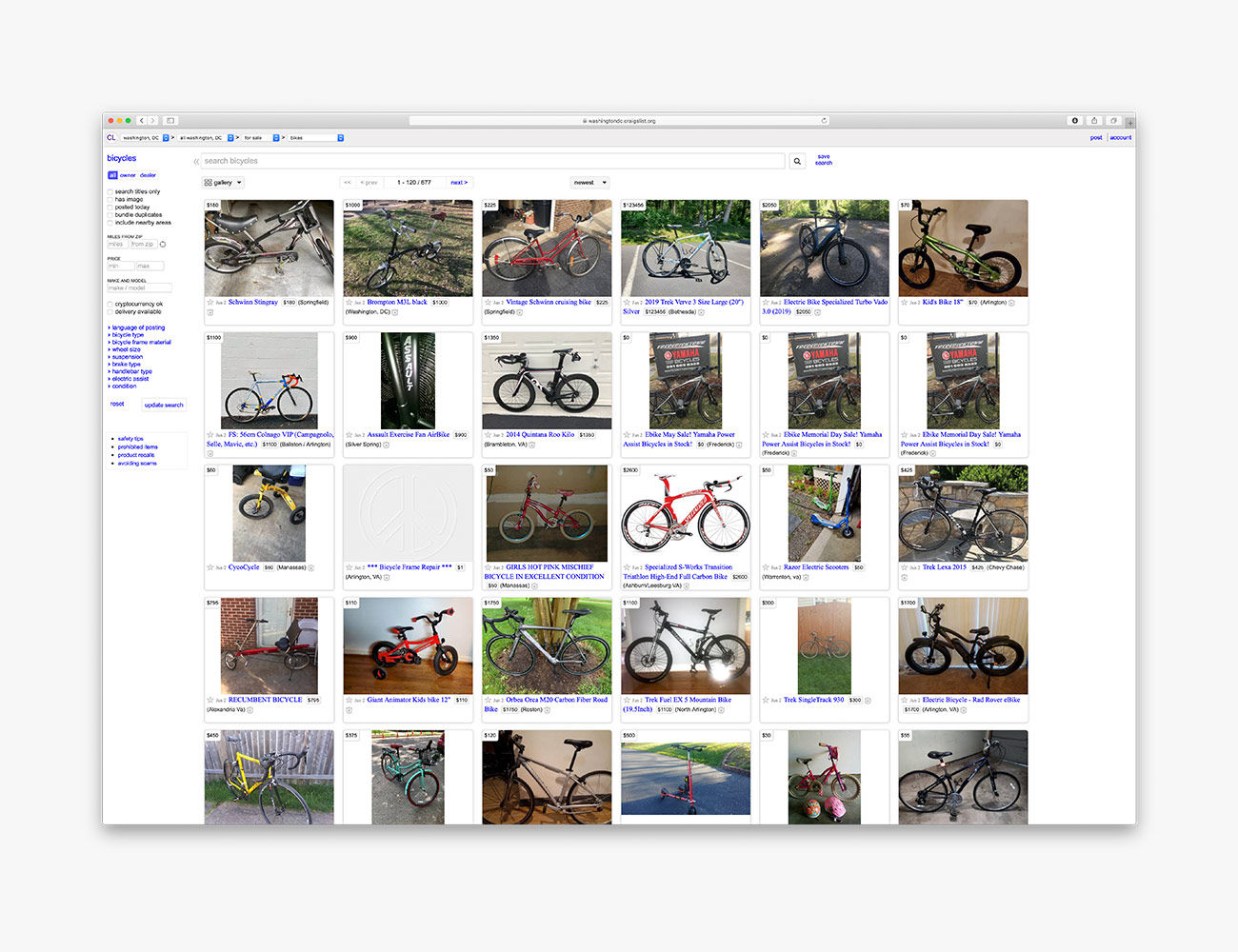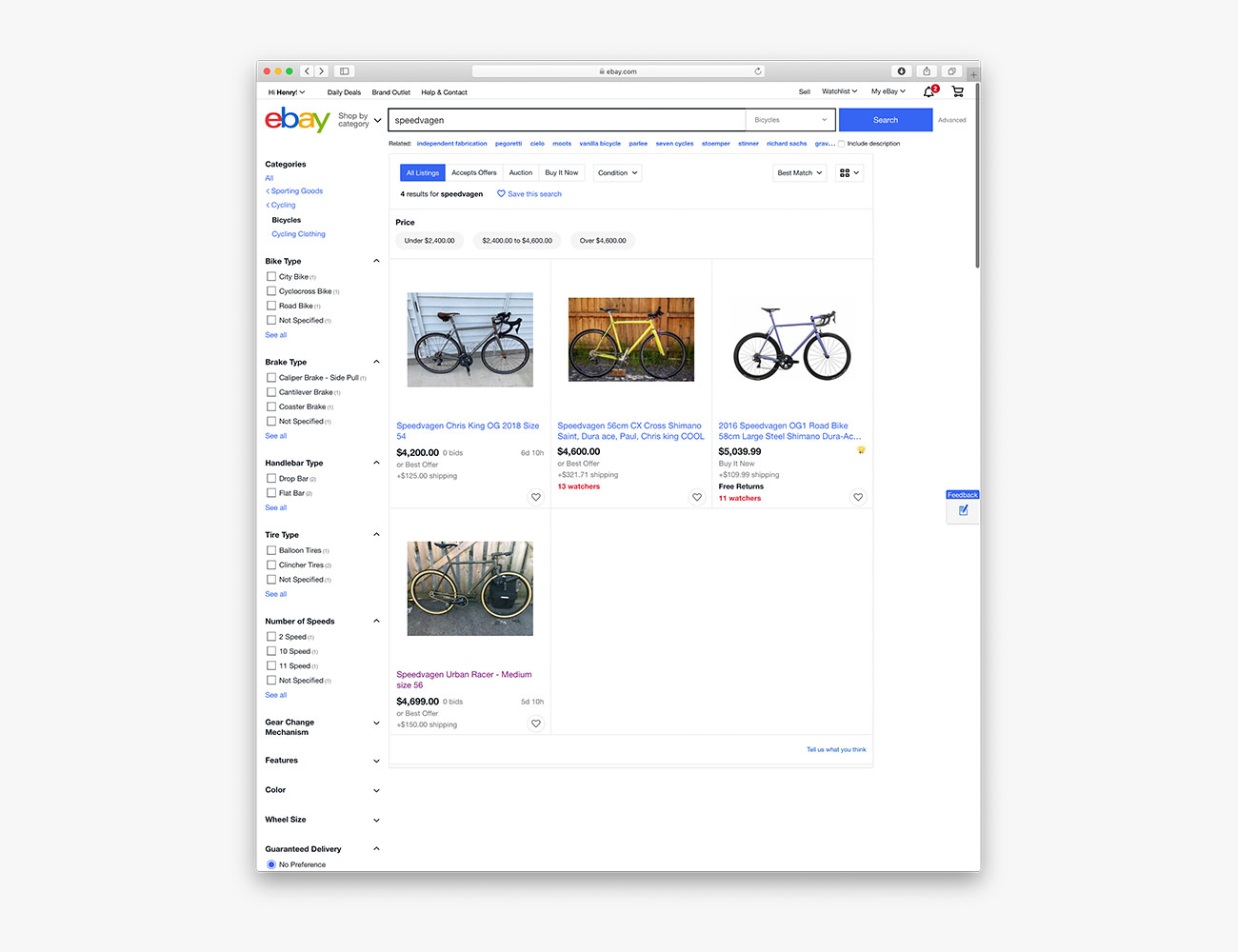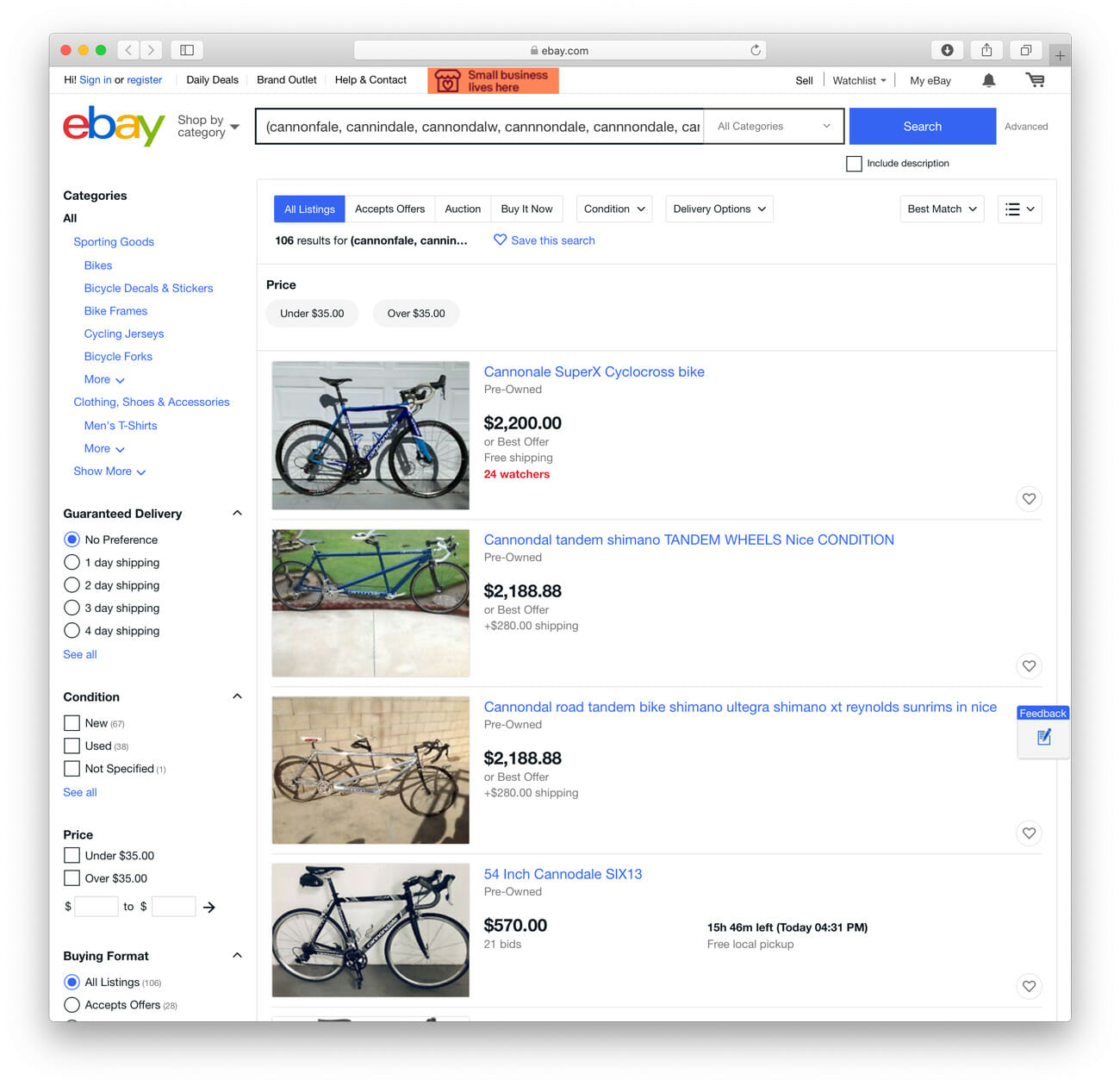Of all the trickle-down consequences of the COVID-19 pandemic, a bike shortage is one we didn’t expect. But bike shops across the country are running low on inventory, and refills from manufacturers abroad may not reach our shores anytime soon.
The force behind the shortage is positive — more people are riding bikes! According to a recent national survey by major bike brand Trek, 21 percent of American bike owners have been riding more often, and 50 percent say they plan to ride more after the pandemic ends. You might be thinking of joining those ranks yourself, but lines out the door and empty shop racks are considerable barriers to new wheels. Thankfully, there is another way — you can buy a used bike, and you can do it online.
There are a few places on the Internet where you can find used bikes: Craigslist and eBay are big ones, but there are also enthusiast communities like Pinkbike’s BuySell forum, Bicycle Blue Book, GearTrade and more. Then there’s The Pro’s Closet, which is less an intermediary between sellers and buyers than a dedicated used bike shop.
Shopping for a bike is a bit like shopping for a car (hell, some bikes are even as expensive as cars). If you’re a novice rider, you typically want to rely on the expertise and recommendations of a shop employee, and even if you’re more experienced, you’ll want to take the thing for a test ride. The quality concern becomes greater when shopping for a used bike, and yet those steps are not always possible when looking online.
With that in mind, here are some essential tips and tricks to buying a used bike on the Internet that can help you get a quality ride at a fair price.
Craigslist


The upside to using Craigslist is that you can coordinate with sellers in your local area to inspect your prospective new bike and give it a test ride before money actually changes hands. That might also be a con these days, given that meetups with strangers aren’t exactly encouraged in the coronavirus age.
Do Thorough Online Research
Begin your assessment before the meetup. Garner as much information from that ad as possible. For some perspective on price, Google the bike’s make, model and year to find out how much it cost new. Check photos for any troubling issues on key components (more on that below). Make sure it’s the right size for you. If any of this information is missing, ask the seller for more details.
Avoid Stolen Bikes
Remember, thieves often sell stolen bikes on Craigslist, and you are liable for possession of stolen goods once one is in your hands. A price that’s too good to be true and an obvious lack of information are both red flags. So is an urgency to offload the bike. You can ask the seller for a photo of the bike’s serial number, which is typically found engraved on the bottom bracket, and search for it in a bike registry such as Bike Index and Project 529.
How to Check the Bike in Person
If these steps lead you to believe the bike’s legit, you can set up a time to meet, check it out and give it a test ride. If you have a friend who knows bikes (or better yet, works at a bike shop), buy him or her a six-pack in exchange for coming with. If you don’t, you’ll need to study up on how to QC the frame, fork, headset, wheels, wheel bearings, tires, drivetrain, derailleurs and more. Global Cycling Network has a detailed video that shows precisely what defects to look for on each of these components — watch it, make a checklist and bring it with you to the meetup.
Finally, give it a short ride to see how it feels, and even after you buy it, bring it to a shop afterward to have it assessed by a professional.
eBay


If you’re looking for a specific model or brand, eBay can be a great way to score a deal. But since you can’t see the bike in person, research — use the same process outlined for Craigslist — and communication with the seller are even more critical. You can apply most of these steps to other online marketplaces like Pinkbike and Facebook.
Size Up the Seller
Even before you start researching the bike, check the seller’s rating and feedback — a score lower than 99 percent should be avoided, and negative feedback speaks for itself. If a seller doesn’t have a history at all, don’t purchase from them. Read the listing description in detail, looking for information about how long this person owned the bike, how often they rode it, how they stored it and why they’re selling. If this information isn’t there, ask for it.
It’s All About the Photos
Without seeing the bike in person, the photos are the only view of the bike’s condition. Scrutinize them, zoom in on them, look for any sign of mistreatment or disrepair. If the seller didn’t post a thorough set, contact them and ask for a full list of specific shots (like a closeup of the rear derailleur, for example) so you can perform a virtual assessment. Pay attention to the background, too, as it might offer clues to how it was stored.
How to Find a Bargain on a Used Bike on eBay
Listings on eBay are rife with spelling errors, and many bike brands have hard-to-spell foreign names. FatFingers is a tool that searches eBay for misspelled listings, so if you’re looking for a Pinarello, you can find bikes listed under Pinerello and Pinnarelo. This tool can help you find a really good, albeit misspelled, deal others may have missed.
The Pro’s Closet


If you’re looking for a high-end bike, The Pro’s Closet is your best bet for finding a good deal without the risk. The company started a decade and a half ago when Nick Martin, an ex-professional mountain biker who sold his old bikes on eBay every time a sponsor upgraded him, began helping other pros do the same. Martin and his team continued to flip bikes and other gear on eBay, the company grew, and in recent years it developed its own platform to address the needs of bike customers better.
Quality Guarantee
Much of what The Pro’s Closet does is derived from the auto industry. The company has a program called Certified Pre-Owned, which is a system of inspecting, verifying and refurbishing each bike to a high standard that’s backed up by a 30-day guarantee (the company also recently created a carbon frame warranty). The process involves an assembly line of mechanics who specialize in particular parts of a bike, says Travis Erwin, vice president of sales at The Pro’s Closet. “Instead of one person going from the beginning to the end,” he explains. “A bike touches close to 15 people by the time it gets out the door.”
The different steps include verifying the bike’s make, model and year to washing the bike to adjusting the drivetrain and shining the wheels. An exhaustive photography process documents each bike from every angle and puts every scratch and scuff in plain view, so you know exactly what you’re getting.
There’s also a full spec list that details all the parts and a handy graphic that rates the condition of the bike’s various aspects on a scale of one to 10. For example, a bike’s frame might score a nine, but its tires a five. The Pro’s Closet provides all this information upfront so you don’t have to do any sleuthing.
About Pricing
Bikes sold by The Pro’s Closet might be more expensive than those you’ll find on other online platforms. Again, the company functions like a car dealership in this regard — it has amassed data on the secondhand bike market and uses algorithmic tools to calculate prices. Erwin also notes that used bikes are snowflakes; one Canyon Neuron AL isn’t the same as another because it has different dings, a different history and even different parts if the previous owner made any upgrades. The company takes each one of these factors into account in pricing (and everything is documented on the listing, too). Plus, part of the value is in the convenience of the service, and the security of knowing your buying from a reputable dealer rather than some total stranger’s front yard.
Trade-In
The Pro’s Closet uses the same data and algorithms to buy bikes into its stock. You can use it to trade in a used bike for another one (all you have to do is take a few photos and give it a condition rating to receive an offer). Then you have a few options. You can take cash, or opt for a voucher worth five percent more to use at your local bike shop. Or you can get 10 percent on top of that if you opt for credit at The Pro’s Closet. Note: The company deals in premium bikes exclusively — the original MSRP on any trade-in bike has to be $1,500 or more.




